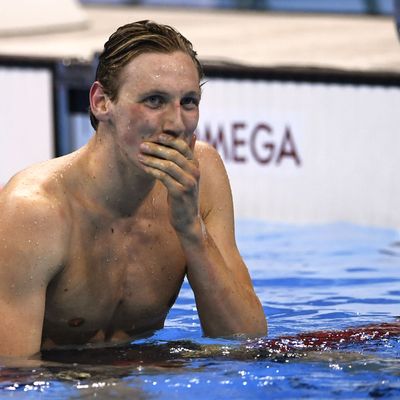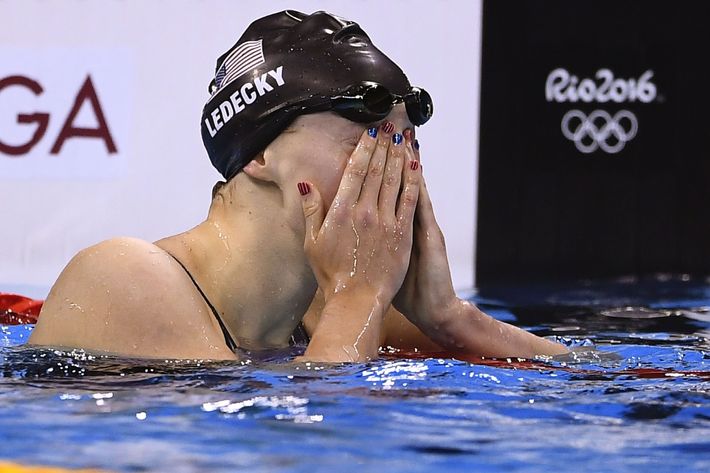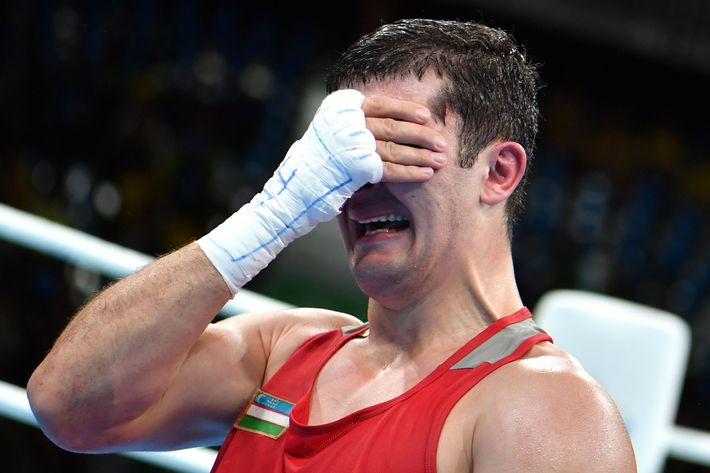
Even if you hate sports, even if your favorite athlete just lost, even you’re already sick of the Olympics or just kind of indifferent to the whole thing, it’s hard to watch the winners’ reactions without feeling your own little tug of emotion. Just look at this shot of Katie Ledecky right after she comes in first at the women’s freestyle final:

Or this one of Uzbek wrestler Rustam Tulagunov winning his quarterfinal match. Yeah, fine, he’s not Team USA, but still, look at the expression on his face – it’s kind of hard not to feel at least a little bit of joy for the guy.

But also: Look at where their hands are. Ledecky’s covering her mouth, Tulagunov his eyes; both are clear indicators of overwhelming emotion, a signal that’s not just limited to joy. (Think of that painting The Scream, or any marriage proposal ever caught on camera.) When people are overcome by feeling – whether it’s happiness, grief, fear, or surprise – they tend to touch their faces. It’s a reaction that pretty much everyone’s either had or seen – and yet scientists have no idea why it happens.
“There’s virtually no empirical evidence for either [mouth-covering or face-touching] in terms of systematic research,” says David Matsumoto, a psychology professor at Stanford who studies gesture. Some researchers have observed them in humans and primates, and one 2014 study on “spontaneous facial self-touch gestures” found that they corresponded with increased activity in the parts of the brain related to emotion; otherwise, though, there’s just not much out there.
But anecdotal evidence suggests that “the face cover happens more often when a person wants to hide their emotions,” Matsumoto says, “especially when there’s something that’s embarrassing or overwhelming for them.” The gesture, then, may have evolved as a means of self-preservation: “Showing emotions is a sign of vulnerability, and it’s a time when other individuals around you can take advantage,” he says.
It’s also possible that we cover our faces as an instinctual way of maintaining order when emotions are running high. “We’re always in some kind of self-regulation mode, because we’re social animals,” he says; covering up can help ensure that our inner urges don’t make their way to the surface. “If you and I are at some cocktail party and there’s some emotional event that occurs, we’re not going to act on our animal instincts.” Mouth-covering in particular may be a way of maintaining “some control of the mouth” to tamp down aggressive expressions or speech.
“Sadness, surprise, joy, shock – obviously they’re all very different emotions, and yet you have the same behavior,” he adds. “So the behavioral function has got to be something constant across emotions.” That function, though, is still unknown – scientifically speaking, emotional face-touching is still a mystery. At least it’s one that makes for stirring television.

